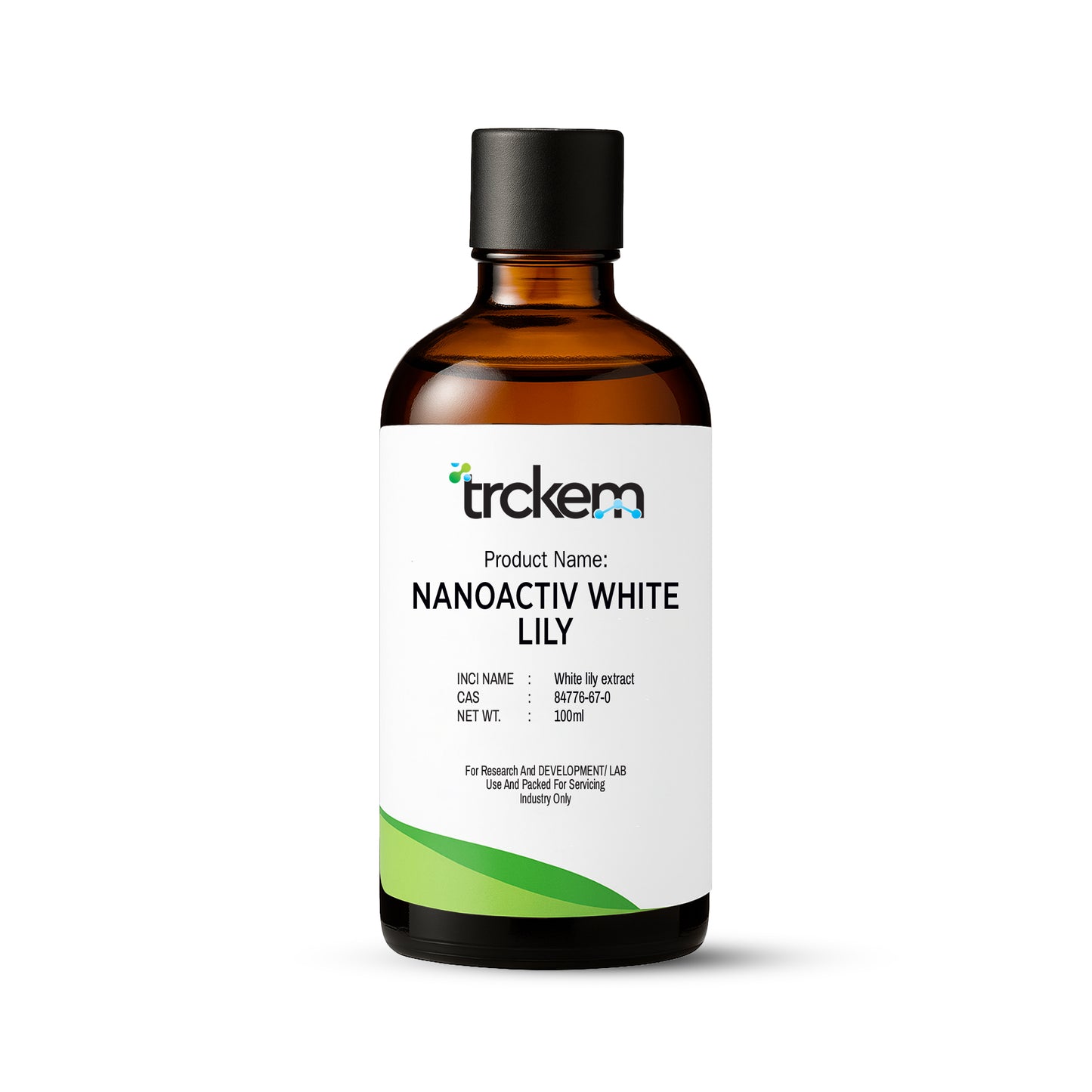
FAQ (Frequently Asked Questions)
1. What is NanoActiv White Lily?
NanoActiv White Lily is a nano-engineered version of White Lily Extract (typically derived from Lilium candidum). Through nanotechnology, the active molecules of the extract are encapsulated or reduced in particle size, improving stability, skin penetration, and performance in formulations.
2. What is White Lily Extract, and what are its benefits in cosmetics?
White Lily Extract (often from the bulbs or flowers of Lilium candidum) is used in cosmetics for its soothing, skin-conditioning, antioxidant, and anti-inflammatory properties. It is popular in formulations intended for sensitive, mature, or irritated skin.
3. How does NanoActiv White Lily differ from standard White Lily Extract?
NanoActiv White Lily offers the same beneficial components of the standard extract, but with enhanced performance because of nano-scale formulation:
- Better penetration into skin layers
- Increased stability (slower degradation / oxidation)
- More uniform dispersion in formulations
- Lighter texture, reduced “heaviness,” and enhanced sensory feel
4. What are the key advantages of using NanoActiv White Lily in cosmetic and personal care formulations?
Improved soothing and calming effect on skin
Better antioxidant protection due to deeper delivery
More even skin-conditioning benefits
Enhanced formulation aesthetics (less residue, better feel)
Potential to achieve equal or better efficacy at lower concentrations
5. In which types of products is NanoActiv White Lily most suitable?
NanoActiv White Lily can be used in a variety of products including:
- Facial serums, creams, and lotions
- Soothing / calming products (after-sun, post-treatment)
- Sensitive-skin formulations
- Eye care or delicate-area products
- Hair care products (e.g. scalp lotions, conditioners)
6. What is the CAS Number and INCI name for White Lily Extract?
CAS Number: 84776-67-0
INCI Name: Lilium Candidum Flower Extract
Note: In some formulations, the extract is from the bulb rather than the flower, referred to as Lilium Candidum Bulb Extract, but the flower extract INCI is more commonly cited.
NanoActiv White Lily would retain the same INCI name in ingredient listings, with “nano” or “nano-activated” noted in technical documentation.
7. Is NanoActiv White Lily safe for topical use?
Yes. White Lily Extract (flower / bulb) is commonly used in cosmetology and is generally considered safe when used at proper concentrations. However, as with any botanical extract or nano formulation, it is essential to test for irritation, sensitivity, and stability in your specific formulations.
8. How should formulators integrate NanoActiv White Lily into formulations?
Add during the aqueous or cooling phase of emulsions (or appropriate phase for your system)
Use gentle mixing or homogenization to preserve nano dispersion
Typical usage levels might range from 0.5% to 3% (or as determined via formulation trials)
Consider including antioxidants or stabilizers to protect against degradation
9. Which skin types and conditions benefit most from NanoActiv White Lily?
Sensitive, reactive, or irritated skin — for soothing
Skin in need of antioxidant support
Mature or aging skin — for conditioning and calming effects
Delicate areas (around eyes, neck) where gentle active delivery is valuable
10. Where can I source NanoActiv White Lily and get formulation support?
You can acquire NanoActiv White Lily through authorized distributors. Support offerings typically include:
- Sample quantities for R&D
- Technical datasheets (particle size, stability, actives)
- Formulation guidance and best practices
- Bulk supply and scale-up assistance


